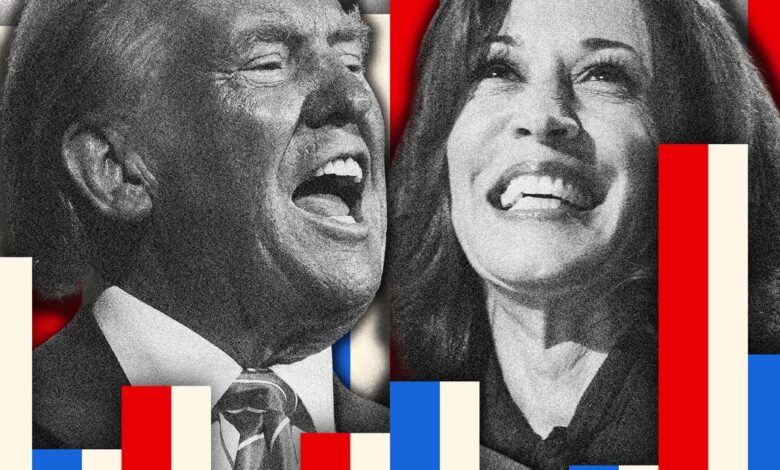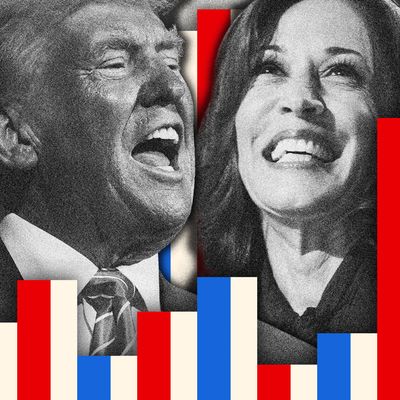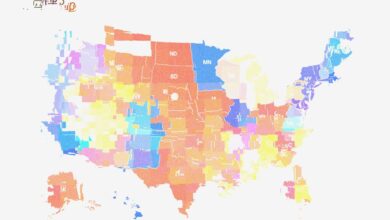

Photo-Illustration: Intelligencer; Photos: Getty Images
It’s unsurprising that in what may be the closest presidential contest since 2000, political observers (not to mention the campaigns) have grown frustrated with the glacial nature of the polling trends. Big developments like the one debate haven’t changed things much, nor has the unprecedented torrent of paid advertising, nor has Donald Trump’s increasingly violent rhetoric.
So there’s a tendency to inflate trends discernible mostly by microscope, giving us headlines like this from The Hill: “Momentum shifts against Harris in presidential race.” Now to begin with, “momentum” is a suspect term because it suggests a trend that has self-propelling force, whether that’s true or not. But a close examination of the polls suggests the Harris-Trump race is still a dead heat, even if it’s possible to torture tiny trends out of the data.
Using the FiveThirtyEight polling averages, the national race is more or less where it’s been since August when Kamala Harris replaced Joe Biden as Democratic nominee and soon opened up a small but stable lead. Since early September that lead has modestly oscillated and now stands at 2.4 percent. In the last two weeks her lead has varied only from 2.4 percent to 2.7 percent. Perhaps if it drops below two percent there will be reason for concern, but we’re talking really tiny shifts. And Harris’s total vote share, which is 48.5 percent in the polling averages, is near her all-time peak (which was 48.6 percent on October 2).
In the battleground states, the mega-trend has been a tightening of the race across the map, with Trump leading in Arizona, Georgia, and North Carolina and Harris leading in Michigan, Nevada, Pennsylvania, and Wisconsin — but both candidates being within striking distance everywhere. At the moment, Trump’s leads in Arizona (1.7 percent, at 48.4 to 46.7 percent) and in Georgia (1.8 percent, at 48.7 to 46.9 percent) are higher than they were a couple of weeks ago, but that may be partially attributable to the mix of pollsters releasing data. But by any standard, a sub-two-point lead is fragile. The former president’s lead in North Carolina is 0.6 percent, the lowest it’s been in October. Harris’s lead in Michigan is 0.6 percent, at 47.6 to 47.0; this is another state where the recent mix of pollsters has probably had an effect. That’s true also in Wisconsin, where she leads by 0.5 percent (48.0 to 47.5 percent). In Pennsylvania, her lead is 0.5 percent (48.0 to 47.5 percent), about where it’s been since late September. And in Nevada, her lead is 0.6 percent (47.6 to 47.1 percent) — again, pretty much where it’s been all this month.
The bottom line is that if the polling sticks, Harris would win with 276 electoral votes to Trump’s 262, with Harris winning the national popular vote by a bit more than Hillary Clinton did in 2016. The (mostly) poll-based prediction models out there agree it remains crazy close, with the slightest of advantages for Kamala Harris. FiveThirtyEight gives Harris a 54 percent probability of winning. So, too, does The Economist. DecisionDeskHQ projects the Electoral College results as a 50/50 proposition. Nate Silver has it at 50.3 percent for Harris and 49.4 percent for Trump.
For reasons too complicated to go into here, Republicans tend to be optimistic, if not triumphalist, about their presidential candidates, particular in the three cycles in which that candidate has been the inveterate salesman Trump, who is forever predicting (and retroactively asserting) a massive landslide win (unless, of course, it’s stolen from him). Democrats, on the other hand, tend to be fretters, or as some say, “bed-wetters.” So despite the extremely positive “vibes” associated with the early stages of Harris’s campaign, no one in the long run will ever out-self-promote Donald Trump and his MAGA loyalists. The only anecdote to spin and hype is more, not less, reliance on the objective data we have, which is mostly from public polls. And no matter what you hear in the wind, those numbers are stubbornly even.
Source link




